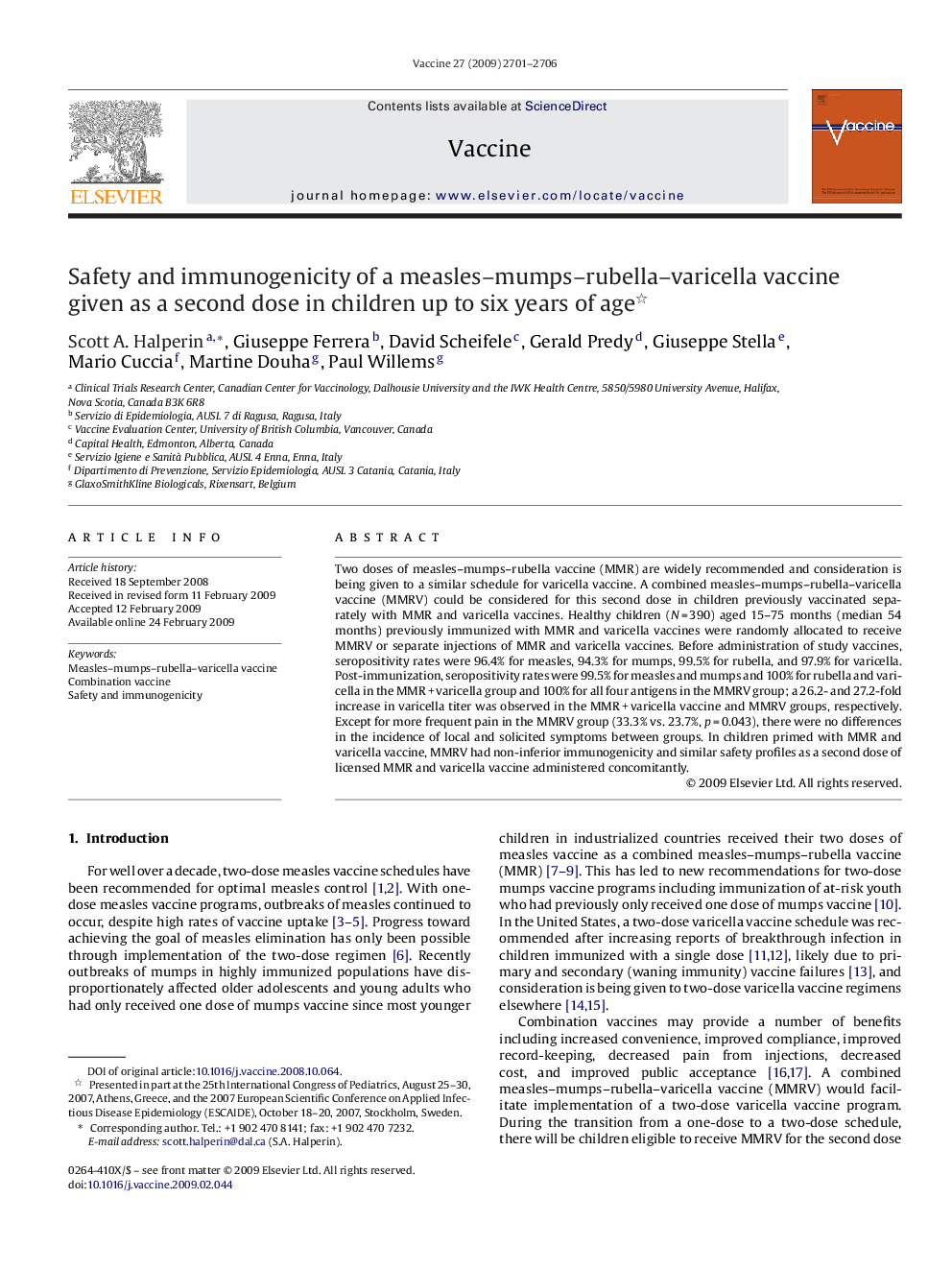| Article ID | Journal | Published Year | Pages | File Type |
|---|---|---|---|---|
| 2406735 | Vaccine | 2009 | 6 Pages |
Two doses of measles–mumps–rubella vaccine (MMR) are widely recommended and consideration is being given to a similar schedule for varicella vaccine. A combined measles–mumps–rubella–varicella vaccine (MMRV) could be considered for this second dose in children previously vaccinated separately with MMR and varicella vaccines. Healthy children (N = 390) aged 15–75 months (median 54 months) previously immunized with MMR and varicella vaccines were randomly allocated to receive MMRV or separate injections of MMR and varicella vaccines. Before administration of study vaccines, seropositivity rates were 96.4% for measles, 94.3% for mumps, 99.5% for rubella, and 97.9% for varicella. Post-immunization, seropositivity rates were 99.5% for measles and mumps and 100% for rubella and varicella in the MMR + varicella group and 100% for all four antigens in the MMRV group; a 26.2- and 27.2-fold increase in varicella titer was observed in the MMR + varicella vaccine and MMRV groups, respectively. Except for more frequent pain in the MMRV group (33.3% vs. 23.7%, p = 0.043), there were no differences in the incidence of local and solicited symptoms between groups. In children primed with MMR and varicella vaccine, MMRV had non-inferior immunogenicity and similar safety profiles as a second dose of licensed MMR and varicella vaccine administered concomitantly.
